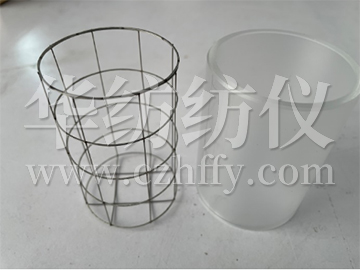News Center
What is the relationship between yarn twist and strength?
Sources:本站 | Date of issue:
2018-07-01
| Browse volume:
Key word:What is the relationship between yarn twist and strength?
When the yarn is stretched to break, it is found that not all fibers are broken, but some fibers are broken, the other fibers slip off, and the broken fibers are not broken at the same time. This breaking property and single yarn strength are closely related to yarn twist. With the increase of twist, yarn strength continues to increase. But after a certain twist, the strength decreases when the twist is continued. The advantageous aspect is that the twist increases and the friction resistance between fibers increases, which increases the component of the strength during the breaking process. The disadvantageous aspect is that the twist increases, the inclination angle between the fibers and the yarn axis increases, and the component that the fibre strength can withstand in the yarn axis decreases, and the twist increases greatly. The stress distribution inside and outside the yarn is not uniform, which aggravates the different time of fiber breaking and makes the strength increase with the increase of twist. When the twist is equal, the strength is high. The twist coefficient corresponding to the critical twist is called the critical coefficient. With the increase of twist, the twist angle increases, the gloss reflects to the side, the gloss is poor, the hand feeling is poor, and the reverse is true. It feels soft, but its twist is too small to produce hairiness and feel loose, so its gloss is not necessarily good.
Twist coefficient and twist direction are mainly determined by the quality requirements of the products. Twist coefficient for different purposes is different. Twist direction depends on the needs of finished products and post-processing. In order to reduce the inconvenience of overturning and operation on the yarn machine, it is generally Z-twist. For example, the twist coefficient of cotton with long fiber length, fine fineness and high grade can be less, and the twist coefficient of fine yarn is larger than that of roving yarn. The elongation of cotton yarn is stretched and elongated under a certain stretching load. The length of cotton yarn is called total elongation. When the load is removed, the stretched cotton yarn will shrink quickly, but can not return to the original length of the retractable length. For elastic elongation, that is, the percentage of elastic elongation to total elongation, the elasticity of yarn increases with the increase of twist, but begins to decline after a certain twist. Twist is generally used close to the elastic twist range.
Often used twist coefficient is higher in combed warp yarn and lower in knitting, about 3.5-3.6. Yarn products with different twist coefficients are classified according to Japanese textile calculation data as follows: ordinary twist = 4.0 (twist coefficient), loose twist = 3.4 (twist coefficient), special loose twist = 1.32-2.8 (twist coefficient), strong twist = 5.0-5.4 (twist coefficient), and special strong twist = 5.0-6.5 (twist coefficient). High twist yarn can be knitted only by steaming process, and sometimes by adding a torsion releaser.
Twist coefficient and twist direction are mainly determined by the quality requirements of the products. Twist coefficient for different purposes is different. Twist direction depends on the needs of finished products and post-processing. In order to reduce the inconvenience of overturning and operation on the yarn machine, it is generally Z-twist. For example, the twist coefficient of cotton with long fiber length, fine fineness and high grade can be less, and the twist coefficient of fine yarn is larger than that of roving yarn. The elongation of cotton yarn is stretched and elongated under a certain stretching load. The length of cotton yarn is called total elongation. When the load is removed, the stretched cotton yarn will shrink quickly, but can not return to the original length of the retractable length. For elastic elongation, that is, the percentage of elastic elongation to total elongation, the elasticity of yarn increases with the increase of twist, but begins to decline after a certain twist. Twist is generally used close to the elastic twist range.
Often used twist coefficient is higher in combed warp yarn and lower in knitting, about 3.5-3.6. Yarn products with different twist coefficients are classified according to Japanese textile calculation data as follows: ordinary twist = 4.0 (twist coefficient), loose twist = 3.4 (twist coefficient), special loose twist = 1.32-2.8 (twist coefficient), strong twist = 5.0-5.4 (twist coefficient), and special strong twist = 5.0-6.5 (twist coefficient). High twist yarn can be knitted only by steaming process, and sometimes by adding a torsion releaser.
Relevant articles
- 2019-06-10 > Comparisons between Fiber Tester and Traditional Testing Method
- 2019-05-22 > Fiber-filter bag technology of acid detergent
- 2019-04-04 > How to Improve the Color Fastness of Products
- 2019-03-29 > Teach you several methods to diagnose the faults of textile testing instruments
- 2019-02-01 > Where is the way out for China's textile instrument industry?
- 2019-01-12 > Talking about the new strategy of textile industry "one belt and one road"
- 2018-12-06 > In the final analysis, the competition among enterprises is the competition of technology.
- 2018-11-20 > What should we pay attention to when using fabric strength machine?
- 2018-10-24 > What are the characteristics of the electronic power machine?
- 2018-08-20 > What is the difference between the equipment of domestic textile instruments?
Related products









